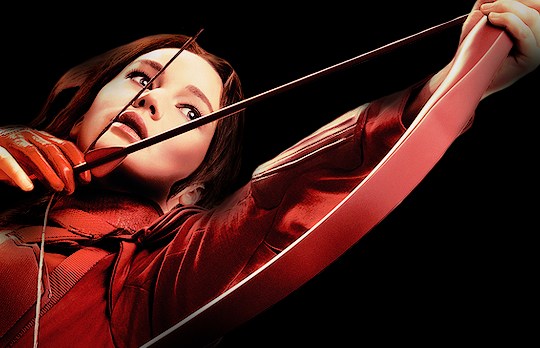Every now and then current events and movie release dates mysteriously converge to make a motion picture seem larger and more prescient than it really is. So it is with The Hunger Games: Mockingjay Part 2. During the runtime of the fictional drama, there were a number of moments that eerily paralleled real-world concerns playing out in the news, including one involving war refugees that brought audible gasps from more than a few audience members. Such moments provide the film with a sheen of relevance that it might not otherwise have had.
Of course new worries replace old ones and the news eventually cycles onto the next problem. When that happens and we look back on The Hunger Games: Mockingjay Part 2 without the context of current crises, what we’re likely to find is a movie that is a fine conclusion to the Hunger Games series, but perhaps not quite the masterpiece it wants to be.
The film picks up immediately where the final scene of its predecessor left off, with Katniss Everdeen (Jennifer Lawrence) recovering from nearly being strangled to death by her brainwashed beau, Peeta (Josh Hutcherson). Vowing to kill President Snow (Donald Sutherland) for all that pain that he has wrought, Katniss begins to make plans to find her way to Panem’s presidential palace and put an arrow through Snow’s heart.
Those plans are temporarily put on hold, however, as Katniss’s duties as The Mockingjay, the living symbol of the rebellion, take her on a coalition-building trip to the war-torn District 2. There she finds the rebels faced with the task of capturing a heavily guarded facility that houses not only much needed weapons, but hundreds of non-military personnel as well. It’s here that the movie begins to make the interesting choice to veer from the traditional action-movie template and take a somewhat more thoughtful route. Rather than segue into an action sequence, the film sticks with the rebellion’s leaders as they first argue how to reduce civilian casualties and then watch the explosions from a distance as their plan is carried out.
After the moral crisis in District 2, Katniss decides she can no longer wait to carry out Snow’s execution. Her plan is to sneak into the capital alone, but it isn’t long before she is joined by a squad comprised of the remaining survivors from the Hunger Games, as well as Katniss’ ever-present documentary crew. Unfortunately for the small band of compatriots, their path to Snow is blocked not only by the capital’s troops, but also by hundreds of elaborate booby traps designed by the same engineers who crafted the Hunger Games.
Once inside the capital the narrative all but abandons the typical action movie tropes. While there is a well-executed fight scene involving some mutants, and quite a number of explosions, for the most part the film avoids battle sequences and attempts to show instead the effects of war on those not directly involved in the fighting. Quite noticeably, there is a conscious attempt to avoid even the slightest hint of jingoism in the proceedings, so don’t expect the film to provide the standard final conflict and resolution.
None of that is to say the movie is overly pacifistic. Rather, the underlying theme of the movie is the dilemma of how one should fight a necessary war without becoming the very monster one is fighting against. Sadly, there doesn’t appear to be any copies of Aquinas’s just war theory lying around Panem, because reading through that surely could have saved the rebels a lot of hand wringing. Interestingly, though, even without direct access to his instruction, Katniss seems to arrive at many of the same conclusions St. Thomas did.
Regrettably, as intriguing as the story choices are, the movie’s narrative is a little disjointed. One would think splitting the final book of the series into two parts would have allowed the filmmakers some breathing room, but this final chapter jumps around a bit too much as it tries to tie up all of the plot threads. Still, Lawrence is a solid enough lead to hold everything together until the end and there are plenty of intriguing ideas along the way to keep things interesting. If nothing else, Sutherland is so brilliant in his brief screen time as the Machiavellian Snow that his performance alone is almost worth the ticket price. All in all, The Hunger Games: Mockingjay Part 2 is time well spent in the theater and a fitting conclusion to the saga.
In a world he didn’t create, in a time he didn’t choose, one man looks for signs of God in the world by … watching movies. When he’s not reviewing new releases for Aleteia, David Ives spends his time exploring the intersection of low-budget/cult cinema and Catholicism at The B-Movie Catechism.

